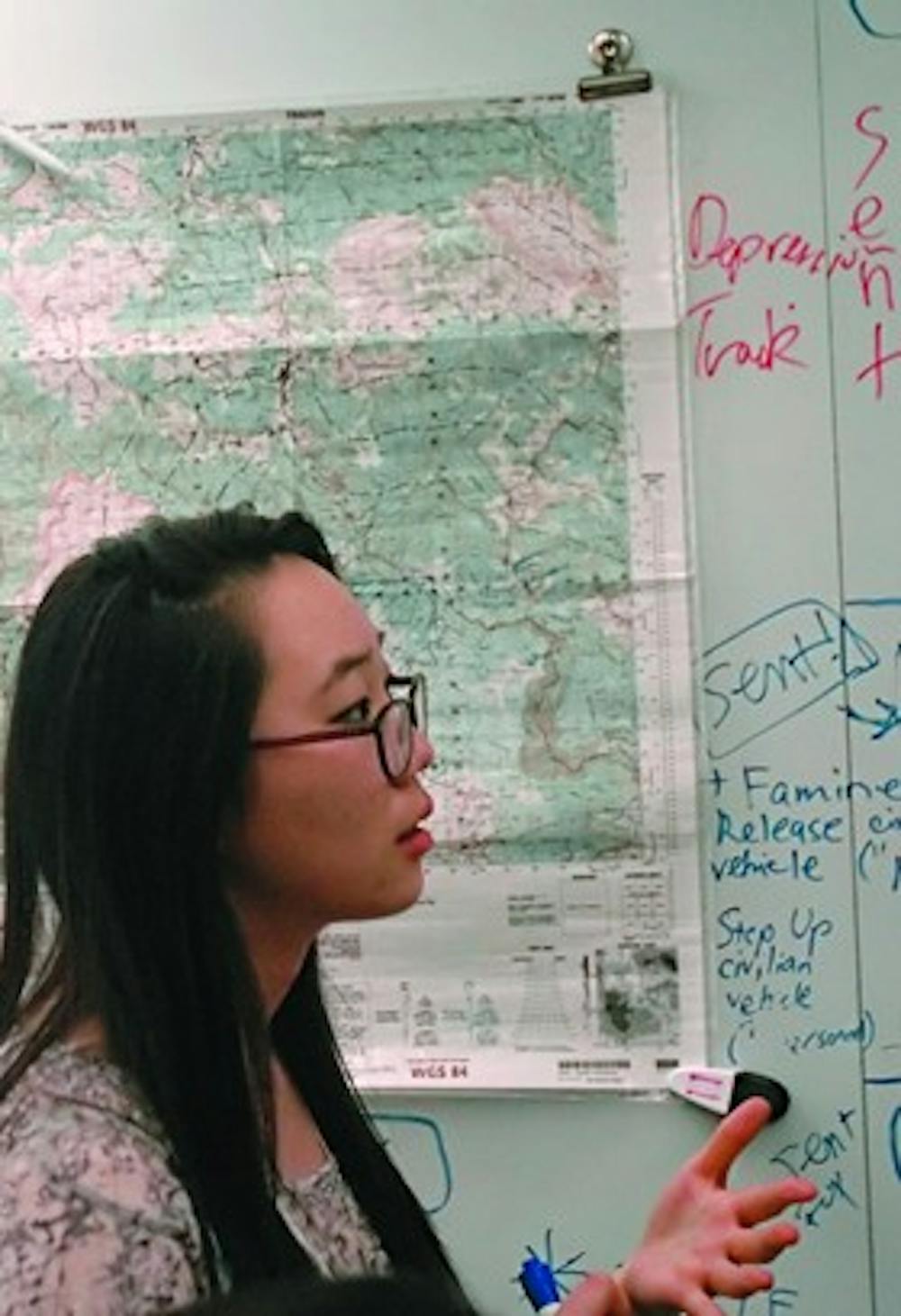
“Execute all civilians.”
This was the order sent over radio in a Weigle Information Commons study room at 4:23 p.m. this past Saturday.
College junior Joseph Tirella gave the order while assuming the role of an insurgent in a real-time Peacekeeping and Stabilization Mission Simulation created by Bruce Newsome, a lecturer in the International Relations Program. Newsome developed the simulation as a postgraduate student at Penn in 2001 and has since created many others.
More than 40 students with majors varying from international relations to biology took on roles as non-government organizations, military forces, government coalitions and two factions of locals in Bosnia. Participants were confined to Weigle for the duration of the mission phase, which occurred in real time from 10 a.m. to 4:30 p.m.
The simulation was based on the Bosnian War that took place during the mid-1990s. During the unstable period in the region, accusations were made of ethnic cleansing, which led to a NATO intervention in 1995.
Like in the actual conflict, students on the peacekeeping side were tasked with securing local refugees and extending a safe zone farther north in the region.
At a mission briefing last Tuesday, students were given a list of nine objectives to complete. They were told that the simulation would teach them functional skills in counterinsurgency and intelligence operations, as well as diplomacy skills. Newsome added that the simulation provided leadership and teamwork experience applicable to any situation.
About three minutes after Tirella’s order that day, a message came via radio from IR Lecturer Andrew Glencross in the control room. “Civilians have all been executed, including the cute babies,” he said.
Tirella and his comrades, playing as the insurgent Highlanders, celebrated their success.
“It’s not normally this bloody,” Newsome said. “It’s been a very bloody day.”
Tirella chose to play as an insurgent because of the unique experience it would provide. He said there are “so few successful anti-insurgency campaigns in the real world that it would be the best learning experience to get inside the minds of insurgents.”
Compared to other instances in which the simulation was carried out — both at other schools and previous Penn performances — Penn’s results this year were average.
This year’s participants were below average in the criteria of “displaced persons secured,” meaning the number of refugees that were rescued. Newsome said if the criteria were weighted, this would be the most heavily weighted one.
Former IR Program Instructor Bill Murphy, who assisted Newsome in running the simulation, explained where the peacekeeping forces went wrong and the insurgents went right.
He said the insurgent Highlanders were excellent at confirming that their orders were carried out — an essential practice in any real-life managing situation.
Murphy also explained the importance of managing information flow in a chaotic environment, which he said is hard to understand until experienced.
Former IR Professor Tomoharu Nishino, who also helped Newsome during the simulation, said he hoped that even though students got to walk away from the simulation and talk lightly about the casualties, they learned from their mistakes.
He said it is important to step back from the situation while it is going on and ask questions about why things are not working out. He and Glencross both agreed that this is often hard to do.
Nishino reminded the students that their below-average performance was a result of the same mistakes made by professionals in real-life operations.
The Daily Pennsylvanian is an independent, student-run newspaper. Please consider making a donation to support the coverage that shapes the University. Your generosity ensures a future of strong journalism at Penn.
DonatePlease note All comments are eligible for publication in The Daily Pennsylvanian.




